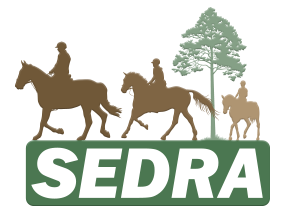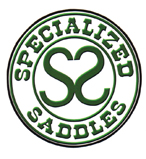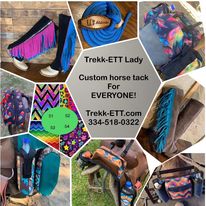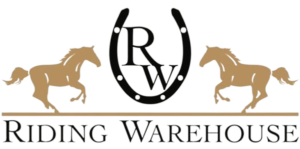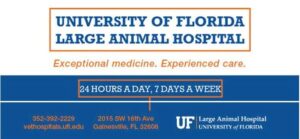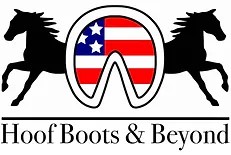
An important part of your preparation should be asking your vet to perform a complete examination of your horse. You are better off detecting and diagnosing small problems now rather than trying to patch them once the competitive season has started. Modern veterinary medicine has an incredible array of diagnostic tools available. The thermographic device shown here can detect changes in your horse’s body temperature, which might indicate an area of inflammation or injury. You have a better chance of finishing the end of your season with a sound horse if your horse is sound when you start your preparation.
© Stacey Nedrow-Wigmore
Now that the holiday season is over, let’s sit down and have a talk. You have big plans for yourself and your horse this year and I want to make sure you have done everything possible to make those plans become a successful reality. I know we have talked about these things in the past and I have asked my editor to link to a sample of my columns on future planning so that you can review them. You can find the columns at www.PracticalHorsemanMagazine.com. But I take this sort of thing seriously and want to go over the main points again with you.
Horse care: Whatever we do with horses always starts with their health and well-being. Fortunately, you already have a full workup planned for your horse next week. (Right?) Vets love this type of examination, as it gives them time to identify and deal with problems now rather than treat symptoms later in the competitive season. Bring your feed bag label and ask about your horse’s diet. Be sure the workup includes an exam of his feet, and make a note of any special recommendations from your vet about hoof care. If he has shoeing suggestions, ask for written recommendations that you can then discuss with your farrier the next time he or she visits.
Tack care: What about equipment? When was the last time you had your saddles restuffed? As horses get fit, their musculature changes. This is especially true of horses who have recently done a Classic event. Even roly-poly ponies can develop a shark-fin wither just before a Classic and your saddles need to reflect this. While you are at it, check the stitching and wear points on all your tack and make the necessary repairs or replacements.
Trailer care: You plan to move up a level this spring. That means more lessons now, which means more time in the trailer for your horse. Make sure your registration and insurance are up to date. In addition, plan to drop off your trailer at a reputable repair shop for a roadworthiness check of the brakes, tires, lights and bearings.
These essentials are all aimed at the schedule of competitions in which you hope to ride during the coming season. You should have already developed that schedule and with it a fitness program designed to keep your horse in excellent shape all year.

Pay close attention to the way your saddle fits your horse. If you have more than one saddle, check all of them. During the competitive season, your horse will change shape. With eventers, this change can be quite dramatic. You should change the stuffing in your saddle as your horse’s body changes. If your saddle is impeding the action of your horse’s back, it will be difficult to improve your dressage scores and your horse will be less likely to use his shoulders correctly over the jump. Part of competitive success is good horsemanship, and good horsemanship is taking care of every detail, no matter how small. Now is the time to take care of as many of those little details so you don’t have to worry later on in the season.
Courtesy, Erica J. Stevens/Equine Welfare Society
Plan Your Own Fitness Preparation
What’s that you say? “Looks like we’ve taken care of all my preplanning?” Not so fast. What about you? Yes, you. All the preparations we have talked about so far have been about your horse and they are all necessary. However, if you are going to do all these wonderful things with your horse, you have to plan your own preparation every bit as carefully as you do his.
The preparation of the rider is a particular concern of mine. It does not matter whether we are talking about dressage, cross country or show jumping—if you improve your fitness, you will improve your performance. End of story.
I have discussed rider fitness with many doctors, physiotherapists and strength coaches and they are unanimous in agreeing that the rider needs to be as fit as the horse. Years ago, I discussed rider fitness with the late Dr. Craig Ferrell, who at the time was the U.S. Olympic Committee physician for Equestrian. “Oh, yes,” he said, “rider fitness is a significant competitive advantage. Unfortunately, riders don’t take it seriously enough.” You and your horse are part of a team. You have to make sure you are as fit as your partner. Dr. Ferrell went on to make several important points. I will try to summarize them here with the understanding that you should consult a professional before you start any new fitness program.
- Plan to get yourself fit the same way you plan to get your horse fit. When you start to get yourself fit, don’t try to get fit all at once; instead, ramp up the training load. Do not try to achieve peak fitness year-round; rather, plan a cycle of fitness. This cycle should be about three months in duration. Put yourself “out to pasture” for short periods, just as you do your horse.
- Concentrate on developing your cardiovascular fitness, core strength and flexibility. Don’t know where your core is? You need to see a fitness trainer! You will find that as your flexibility increases, your incidence of injury will decrease. Most life-long riders I know have lower-back issues. Core and flexibility training could have prevented many of these problems.
- Build up your cardiovascular fitness using aerobic exercise. Do this for a total of 200 minutes per week. Train at around 70 percent of your maximum effective heart rate. You can determine your maximum effective heart rate by subtracting your age from 220. You can run, swim, bike or use an elliptical trainer or a treadmill for your cardiovascular training. Some Olympic level riders may get on from five to 10 horses a day and do not have to work out in order to get fit. However, when away competing with a team (thus riding just one or two horses daily), they run, swim or ride a bike to maintain their fitness. In other words, if—like most readers—you ride just one horse a day, that exercise is not enough to get you fit.
- Check your fat-to-muscle ratio with a professional trainer. Various experts suggest slightly different ranges for this ratio, but it is safe to say that women’s weight should be between 18 and 25 percent body fat. Men carry less subcutaneous fat and their recommended range is 15 to 20 percent. Just as with any part of training, do not obsess on a number. Your fat/muscle ratio is unique to you, just as your weight, your frame, your bone density and so on are.
Previously, Practical Horseman published a series of fitness exercises developed by Keith Hutcheson, at one point the owner and fitness director of Middleburg (Virginia) Fitness Club, and demonstrated by Olympic veteran Mara Dean. (Keith holds a BS from Northern Michigan University, MS from the University of Southern California, MMS from Marine Corps University and has done PhD work at Virginia Tech. The American Council on Fitness and the Worldwide Instructor Schools certify him as a personal trainer. He also is certified as a lifestyle and weight-management consultant.) These are excellent exercises. You do not need to join a health club to make them work and they are designed specifically to improve your riding fitness, strength and flexibility. You can find the series here: Exercise 1, Exercise 2, Exercise 3.
When I spoke with Keith most recently, he made several good points.
- Fitness is a major factor in safety-related situations. The fitter you are, the quicker your response will be and the safer your riding will become. The professional sports world discovered how important fitness is to top-level athletes. Keith makes the point that Tiger Woods had a workout regimen that has revolutionized the golf world.
- Lose the scale. This is not about how much you weigh. It is about how fit you are and weight is not the only indicator of fitness. Muscle is heavier than fat. Many riders would happily stay at the weight they are now if they could lose inches.
- Do some form of cardiovascular training every day. In addition, you should do some form of strength training three days a week. (Older riders might want to drop this back to two days a week, as their recovery period is longer.)
- Divide your strength training into three areas: upper body, core and lower body. Your upper-body training should concentrate on your upper back and your shoulders. Your core exercises should strengthen your lower back, your obliques, your abdominals and your gluteal muscles. Your lower-body exercises should emphasize your outer thighs. Most riders already have unusual strength in their inner thighs. This doesn’t mean you can ignore that part of your system, just that you should make sure your muscular system is balanced and equally trained.
Keith made one statement that really resonated with me. He said, “When riders take their fitness to a new level, they take their riding to a new level.” While I was in the Army, I worked at the U.S. Army Modern Pentathlon Training Center for two years as the assistant riding coach. Young officers came into the center as candidates for the modern pentathlon team and were taught how to ride. Many of these young men had recently set NCAA swimming records or had won national titles as cross-country runners. They were already extremely fit when they arrived at the center. Yet a few minutes in the saddle would reduce these world-class athletes to quivering fatigue.
I quickly learned that there is fitness, and then there is riding fitness. These are related, but they are not the same thing. I have been very critical recently of some riders’ galloping positions because they are riding with their stirrup leathers too long and with their body too straight. Part of the reason they do this is that they are not fit enough to gallop in a correct position. Keith’s exercises will greatly improve the rider’s galloping position. (Make sure that whatever program you are in understands the unique nature of your sport.)
As usual, I will let Karen O’Connor have the last word. Long before her retirement, she told me of her efforts to rehabilitate after a serious non-riding accident. I asked her why she was going to all that trouble to get fit again and she said, “I just feel like I owe it to my owners, to the team of people helping me, to my sport and, most importantly, to my horses. My horses need every part of me … mentally, technically and physically.” Truer words were never spoken. I hope you take them to heart and that your hard work this year makes all your efforts worthwhile. You owe it to your horse.
This article was originally published in the February 2018 issue of Practical Horseman
